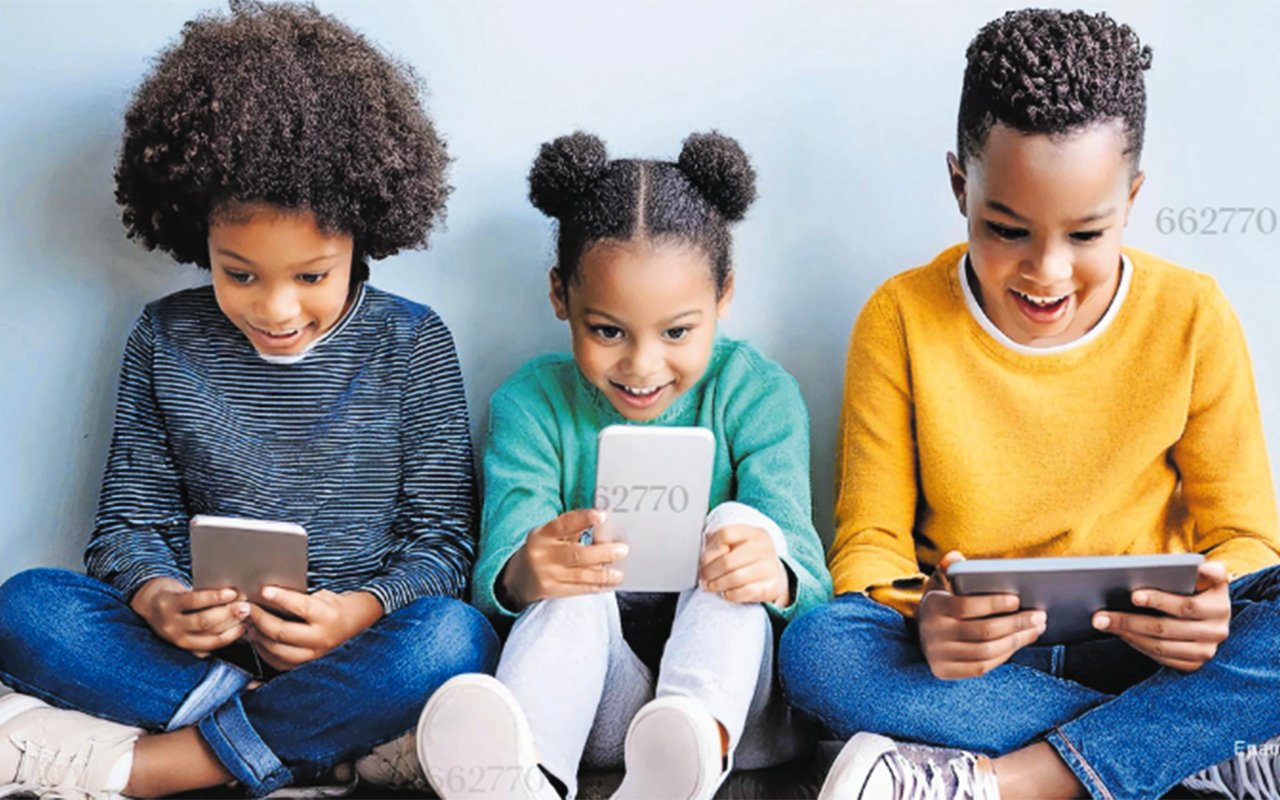
In the age where children use high tech gadgets, parents ought to ensure they use them in moderation. Photo/Firefly Generated
Children’s experiences occur in two worlds, the physical and the digital but increasingly these are crossed into each other, sometimes used as a pathway to commit physical, sexual and emotional violence.
Abusers can contact children anytime, anywhere, making it very difficult for their victims to escape abuse and exploitation, Ms Tabitha Suubi, a child rights activist at Raising Voices, says.
“There are adults targeting children online for sexual purposes on social media on gaming and messaging platforms,” Suubi says.
‘‘Worse still, the internet allows abusive content such as photos and videos to live in the digital world forever, potentially falling into the hands of anyone, leading to blackmail and further exploitation.
‘‘If they share private information, nude photos or videos of themselves, they go public and they are permanent. They are going to stay,” the child activist explains.
With more than five billion Internet users today, the way children experience the world of learning is no longer bound by four walls.
In August this year, the Minister of Education and Sports opened the way to embracing digital gadgets in learning. The new strategy is designed to meet the expectations of existing policy and regulatory frameworks while improving teaching and learning outcomes through digitally-enhanced curricula.
The Education minister Janet Museveni proposed that school heads consider reconfiguring digital gadgets to protect the learners.
At the same event, Mr Stanley Mugume, head teacher of Kyambogo College School, said the gadgets in their possession were yet to be secured.
Mr Andrew Adroni, an IT expert, discusses the different tools parents and teachers can use to protect children online.
“Digital safety in schools is a concern nowadays because students and pupils are normally exposed to a lot of content. So, in regards to maintaining safety for the children, there are several apps that are recommended for parents to use, then there are those that are specific to teachers and schools that they can use to protect the children while they are interacting with these technologies,” Adroni says.
“So, for homes, I recommend parents to use these apps. One is Google Family Link. This is a free application that uses Google. So, most parents use Android devices and most of these gadgets they buy for their children are normally run by Android. So, this tool could help them monitor their activities, block links they do not want them to access and block particular apps they do not want the children to access,” he adds.
The other app is Apple Screen Time for children using iOS gadgets such as iPads, iPhones, MacBook Pros, “That is an app that can be used by parents to monitor the time they spend on their screens, also blocking access to sites that have adult content and other content that is not specific for the children,” he says.
For schools, he recommended Microsoft Family Safety, an application that can be used to block particular applications from being accessed by students. Adroni says this is very helpful because it integrates well with the operating systems that most schools use.
“Most schools use Microsoft and this is a Microsoft product which can easily integrate with most of their systems. Besides that, I think schools need to do more in terms of setting security measures for the children. That is by setting up firewalls,” he explains.
He adds that, “Most of the schools have networks through which the students connect to. So, these should also be protected from intrusion and from any malicious activity that can happen with regards to these devices and the internet.”
He recommends Bark as tool for both teachers and parents to monitor what is happening, what students access, and also send reports to the teachers and the parents on what activities the students are normally engaged in while using the internet and other resources.
The other tools are Custodian and Net Nanny which work like Bark. Most of them are free, and some of them are in-built in the operating systems.
“For example, Apple Screen Time is already in-built in all Apple devices. Then, for Google Family Link, is free, and most of the apps I have talked about are free. There are a few that require payment, but as you know, like, we are in an era where digital transformation is growing and artificial intelligence is coming in, and the students are exposed to a lot of resources. So, some of these apps use some of these APIs to really protect the children. But, majority of them are free."
At the national day of prayer against trafficking in persons this month, the Internal Affairs ministry revealed that online child trafficking is on the rise and asked parents to protect their children at all costs.
According to the Child Fund Alliance, in more than three decades, children's usage of the internet has become more intrusive, with many of them at the receiving end of users worldwide.
Each day, more than 175,000 children go online for the first time. It is this situation that has the Education ministry concerned. With more likely to join under the guise of learning - there will be more concerns.





